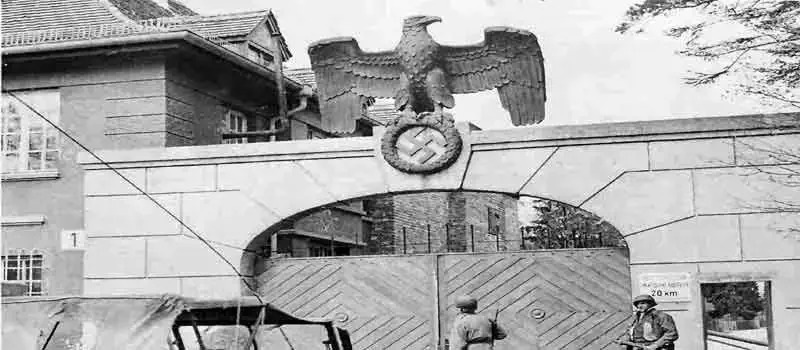- Military History
- Prisons, Prisoners & Camps
- Nazi Camps
- Dachau Concentration Camp (1933-1945)

Dachau Concentration Camp (1933-1945) The so-called model concentration camp founded by Heinrich Himmler in March 1933
As the first Nazi concentration camp, Dachau set the tone for all subsequent facilities of this type. The rationale for the establishment of the camp followed the suspension of the German democratic constitution on 28 February 1933, with the ensuing "protective custody" measures against all critics of the Nazi regime.
On 21 March 1933, Heinrich Himmler announced the opening of the Dachau concentration camp, northwest of Munich, to accommodate 5,000 prisoners. A transition period followed, during which the Bavarian State Police administered the facility before handing it over to the SS-Schutzstaffel. Mistreatment of prisoners began early, with the first murders occurring in May 1933. Even though civilian prosecutors opened inquiries questioning Nazi reports of suicide and attempted escape, these and subsequent investigations of other deaths were quickly quashed.
Theodor Eicke became the camp's first SS commandant in June 1933 and set about implementing protocols and rules of operation that would influence the functioning of all other Nazi detention camps. By October 1933, the commandant's office had issued a strict disciplinary and penal code that included flogging and solitary confinement for offenses as minor as failing to salute a guard. All prisoners, regardless of nationality, also had to correspond in German with their families.
Throughout its existence, Dachau served as a camp for political prisoners, primarily communists and Social Democrats, but also anyone deemed critical of the Nazi regime. Eventually, other types of prisoners would join the political detainees, especially common criminals and so-called anti-socials.
This shift in the nature of the prisoner groups was also intended to further humiliate political prisoners. Following the implementation in 1935 of the Nuremberg Laws for protecting German blood, Jews were also brought to Dachau, but they were eventually shipped east to death camps.
As of 1938, additional barracks were constructed, including the camp entrance building. When completed, Dachau was a self-contained entity that housed an SS “Totenkopf” Death's Head unit. Several notorious careers began in this unit, including those of Josef Kramer (the last commandant of Bergen-Belsen Concentration Camp), Rudolf Höss (later commandant of Auschwitz Concentration Camp) and Adolf Eichmann.
In wartime, Dachau became a principal camp, to which 33 subsidiary camps and several smaller units were attached. Prisoners worked either on the camp grounds or, later, in the war industry, especially in aircraft factories around Munich. Sometimes, they were put to work in the stone quarries of Flossenbürg and Mauthausen concentration camps. As of 1941, Dachau became the site of human medical experiments, including those carried out for the Luftwaffe on hypothermia and high-altitude exposure.
A gas chamber and crematorium were constructed in 1940 intending to use these to kill mentally physically disabled patients under the wartime euthanasia program. Two years later, “Baracke X”, a bigger plant with a gas chamber and four incinerators, was completed. Neither gas chamber was used, as handicapped prisoners were shipped to Hartheim castle near Linz for discreet termination. Other victims, however, were shot.
As of the summer of 1944, Dachau began receiving prisoners from other camps in the east and west that were being evacuated, resulting in a huge congestion of prisoners and worsening living conditions. Dachau held some 40,000 prisoners on the day it was liberated by American troops. Since it opened, 206,206 prisoners had entered the camp; according to official records, 31,591 of these died on camp grounds. The fate of countless others remains unknown.
The camp was liberated by the Allied armies on 29 April 1945 and later became the site for a memorial to the great numbers who died there.
- Germany - Weimar Republic (1919-33)
- Germany Nazi (1933-1945)
- Weimar Republic (1918-1933)
- WWII (1939-1945)
Map
- {{#owner}}
- {{#url}} {{#avatarSrc}}
{{name}} {{/url}} {{^url}} {{#avatar}} {{& avatar}} {{/avatar}} {{name}} {{/url}} - {{/owner}} {{#created}}
- {{created}} {{/created}}























